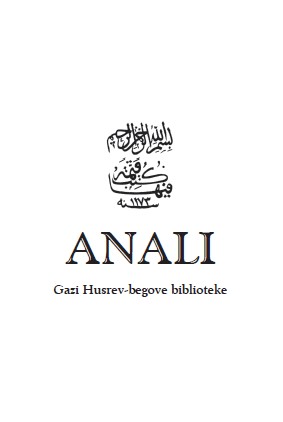NOVI KROJ STARE TKANINE: TAʻLĪM-I FĀRISĪ I GRAMATIČKI OPIS PERZIJSKOG JEZIKA U OSMANSKOM CARSTVU
A NEW PATTERN OF OLD FABRIC: TAʻLĪM-I FĀRISĪ AND THE GRAMMATICAL DESCRIPTION OF THE PERSIAN LANGUAGE IN THE OTTOMAN EMPIRE
Author(s): Munir Drkić, Ahmed ZildžićSubject(s): Theoretical Linguistics, Morphology, Syntax, Lexis, History of Education, 19th Century, The Ottoman Empire, Philology
Published by: Gazi Husrev-begova biblioteka
Keywords: Taʻlīm-i fārisī; Persian grammar in the Ottoman Empire; the traditional approach to the study of grammar; paradigm shift;
Summary/Abstract: This paper aims to examine the work entitled Taʻlīm-i fārisī in the context of the Ottoman tradition of the grammatical study of the Persian language. Taʻlīm-i fārisī, most likely penned by Kemal-pasha, is a short yet exceedingly significant primer for Persian language students dated in the middle of the 19th century. After a brief overview of the Persian grammar studies in the Ottoman Empire, the authors present the work and its author and conduct an analysis of the content of Taʻlīm-i fārisī. In terms of its underlying methodology, this work stands halfway between two principal tendencies: one is the traditional approach to studying the Persian language in the Ottoman Empire; another is a new approach developed under the influence of grammatical description of European languages. This paradigm shift in the Persian language's grammatical description within the Ottoman Empire is readily observable in the primer under review.
Journal: Anali Gazi Husrev-begove biblioteke
- Issue Year: 2020
- Issue No: 41
- Page Range: 31-48
- Page Count: 18
- Language: Bosnian

